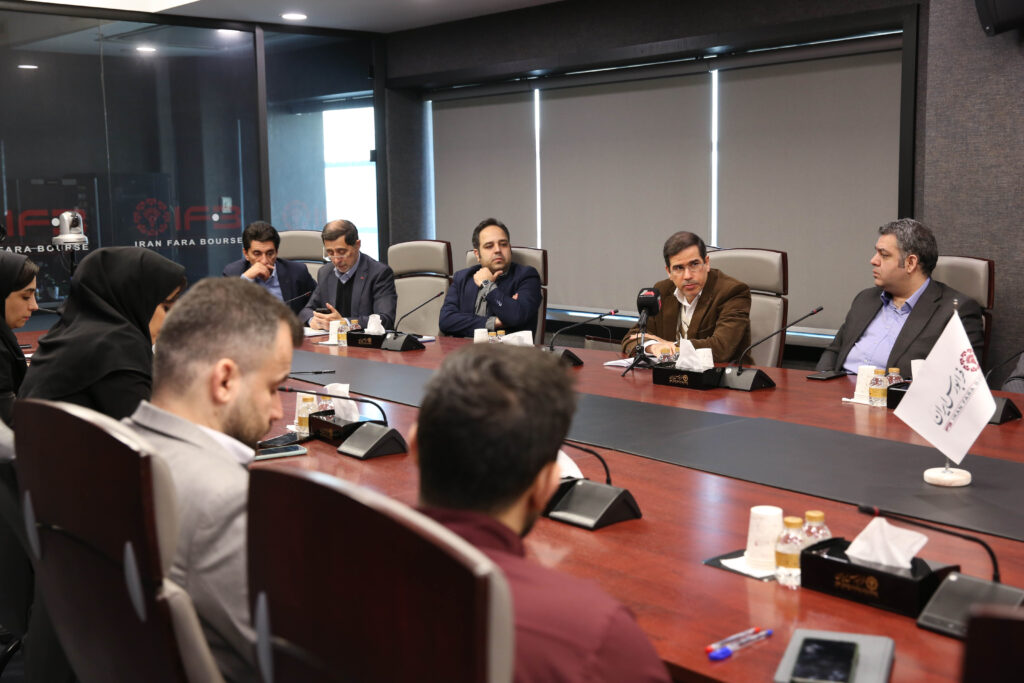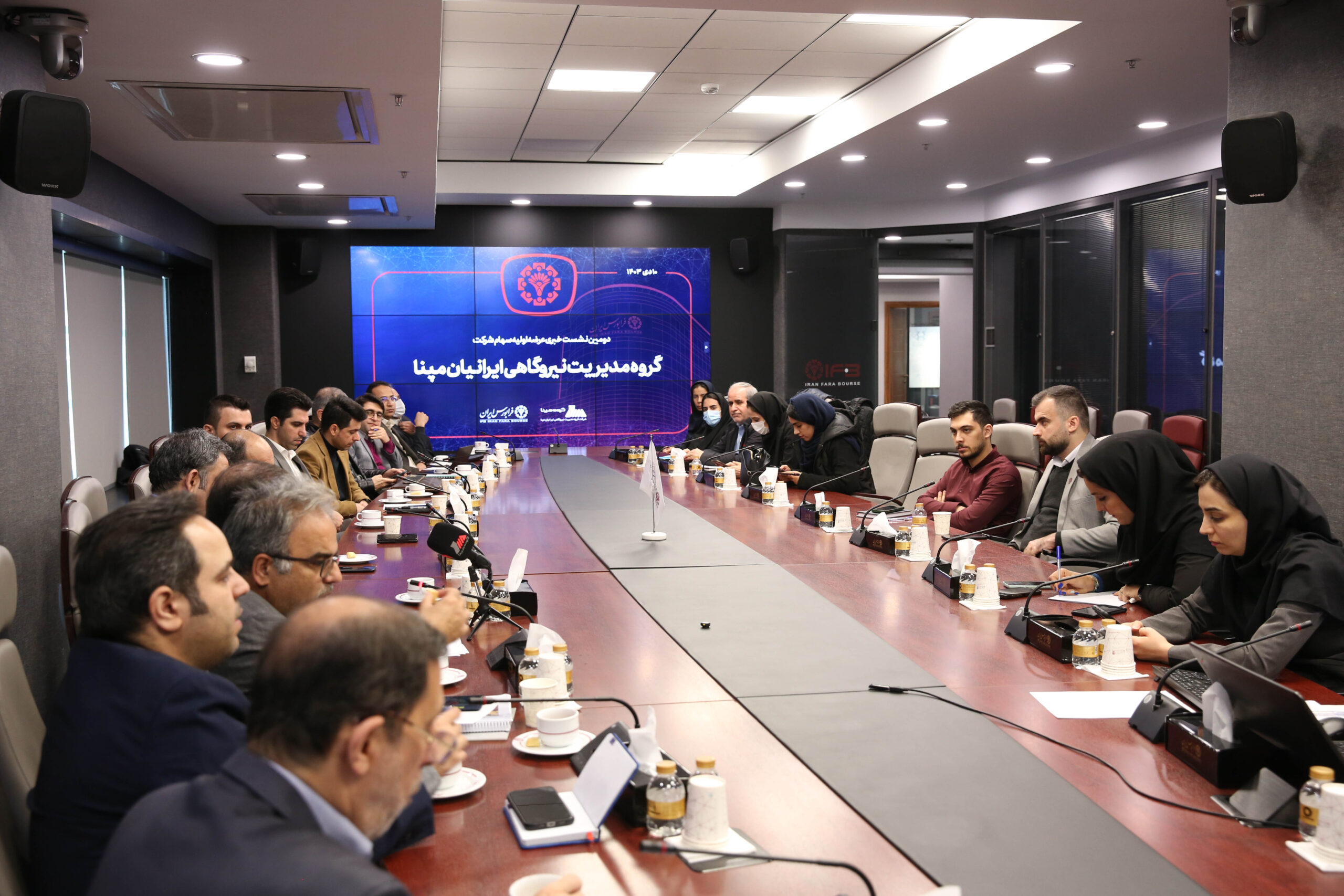MAPNA Group President Mohammad Owliya explained the conglomerate’s plan to address Iran’s energy imbalance while accelerating the growth of renewable energy projects across the country.
He made the statements while addressing the second press conference, held on December 30, 2024, to introduce the MAPNA Iranian Power Plant Management Group which is slated for an initial public offering (IPO) next week.
Mohammad Owliya, President of MAPNA Group, emphasized that recent stock offerings aim to provide greater transparency for capital market participants and shareholders regarding the conglomerate’s activities. “The offering of shares in MAPNA Iranian Power Plant Management Group, along with the growth of MAPNA Group’s stock, will benefit investors and shareholders alike,” Owliya stated.



MAPNA’s plans to address energy imbalance
Highlighting MAPNA’s commitment to addressing Iran’s energy challenges, Owliya said, “Despite the difficult energy landscape and imbalances, we have both short-term and long-term plans, including agreements with the Ministry of Energy for the summer of 2025.”
These plans involve completing ongoing projects as well as initiating new ones, he said, adding that their implementation will enhance electricity production and establish modern, effective infrastructure, ensuring better conditions during peak summer consumption compared to previous years.
Owliya outlined MAPNA’s operational goals, stating, “We are working on projects totaling nearly 6,000 megawatts, including 4,000 megawatts of thermal and renewable power plant construction, upgrades, and capacity expansions, along with 2,000 megawatts aimed at reducing energy imbalances through efficiency improvements. Despite time constraints and liquidity challenges, we are determined to fulfill our role effectively.”
Energy economy
On the topic of Iran’s energy economy, Owliya said the energy imbalance can be addressed in the course of next four years with the support from legislative authorities, regulatory reforms, and gradual energy tariff adjustments. “Tariff reform is essential because investment in energy and electricity depends on it.”
“With the government’s commitment to tariff adjustments, regulatory changes, and support for investment, MAPNA Group, as a key player in the industry, can execute projects more efficiently, ensuring better cash flow across operations,” he stressed.
Owliya also addressed the issue of peak energy imbalances during summer, pointing out that While MAPNA Group was often associated with power shortages during peak seasons, it’s clear that the primary issue lies in the shortage of energy resources.
Emphasizing the national scope of the energy challenge, Owliya warned against simplifying the issue: “We must avoid reducing energy and electricity issues to the responsibility of a single entity or ministry. This is a national matter that requires collective effort over time.”
Combined-cycle plants could tackle energy imbalance
Owliya highlighted MAPNA Group’s initiative to convert simple-cycle power plants into combined-cycle plants, stating, “This project could add up to 4,300 megawatts to the national grid over four years, provided regulatory reforms, capital market funding, and other essential conditions are met. Importantly, this additional electricity will not require new fuel consumption, making it highly significant for addressing fuel shortages, environmental concerns, and power capacity.”
Regarding financing, Owliya noted that the majority of the required investment should come from modern financing mechanisms in the capital market.
“Various industries have shown strong interest in MAPNA’s capabilities after visiting our facilities, and this model allows broader public participation in projects that can generate revenue through off-peak industrial sales and even exports. This approach offers higher returns compared to traditional power plant investments, which often struggled to recover initial capital costs,” he said.
Combined-cycle power plants, he maintained, offer multiple benefits, including increased power generation, improved efficiency, reduced fuel consumption, positive environmental impacts, and better financial returns for investors through capital market participation.
“This initiative was recently presented at an exhibition attended by the Iranian President and received significant support. We are now witnessing ongoing follow-ups from the Presidential Office, Ministry of Energy, and other relevant organizations to ensure this proposed model moves forward. Once implemented, these combined-cycle plants, with an additional capacity of 4,000 to 5,000 megawatts, will bring a transformative impact to Iran’s electricity sector,” Owliya added.
He also said that another proposal to the government entailed constructing new combined-cycle power plants to replace outdated, inefficient simple-cycle plants, amounting to approximately 2,000 to 3,000 megawatts. “These combined-cycle units will operate with two to three times the efficiency of current simple-cycle plants while significantly reducing fuel consumption,” he said.



Renewable energy initiatives
Turning to renewable energy, Owliya emphasized growing public, industrial, and investor interest in this sector. “Over the past year, numerous permits and contracts have been finalized between MAPNA Group and the Ministry of Energy, private investors, and various industries for the construction of renewable power plants.”
“Currently, there is a potential for 10,000 to 30,000 megawatts of additional renewable energy capacity across the country,” he said.
Several projects are already underway, with an expected capacity of 500 megawatts by the end of this year (March 2025), increasing to 1,000 to 1,500 megawatts by next summer, he said. “These include MAPNA’s EPC (Engineering, Procurement, and Construction) projects for clients, as well as MAPNA’s direct investments, such as a 430-megawatt solar project.”
Owliya also stressed MAPNA Group’s commitment to developing innovative renewable energy solutions. As the adoption of renewable energy grows in households, small industries, and industrial parks, there’s a demand for new products, he said. “In response, MAPNA plans to introduce new offerings next year, including an integrated solar package with energy storage. These packages are designed for small and medium-sized industries, are easy to install on-site, and offer both solar power generation and storage capabilities.”
Power transmission and distribution
Addressing the power transmission and distribution sector, Owliya said that while substantial investments have been made in power generation over the past two decades, transmission and distribution remain underfunded. “This sector is crucial for the future, and MAPNA has prioritized it in our structural reforms, establishing it as a standalone organizational division within the group. We also foresee new business opportunities emerging in this domain over the coming years.”
Water infrastructure projects
Owliya highlighted the growing importance of water-related projects, including hydropower, water transfer, desalination, and recycling.
Since the early 2010s, MAPNA has been involved in thermal desalination projects, such as those managed by Mapna Qeshm Water and Electricity Generation Company, he said, noting that two units, each producing 9,000 cubic meters of water daily through gas turbine heat recovery, are operational. “Similar projects are also under construction for other clients,” he added.
He elaborated on additional desalination initiatives using Reverse Osmosis (RO) technology. “Large and small-scale RO plants, such as the Lian plant in Bushehr, are operational.”
However, water resource management isn’t limited to desalination—it also depends on recycling and reusing wastewater, which remains “underdeveloped” in the country, he said.
Owliya highlighted an ongoing Build-Operate-Transfer (BOT) project at Esfahan Steel Company, which utilizes treated wastewater from two nearby towns. “This initiative not only addresses water shortages but also offers significant environmental benefits. The project is expected to become operational by the end of this year.”
He also pointed to the importance of addressing agricultural water consumption as part of the nation’s water crisis management efforts. “Agriculture accounts for one of the largest shares of water consumption in the country, and reducing its usage can significantly contribute to resolving the water crisis. This is one of the ongoing projects we are actively working on,” Owliya stated.
EV infrastructure and electrification initiatives
Owliya highlighted MAPNA’s strategic focus on electrification and electric vehicle (EV) infrastructure as part of the company’s forward-looking agenda. “MAPNA is not an automaker; rather, we collaborate with multiple automobile manufacturers to develop powertrains and have several ongoing projects in this domain,” he explained.
However, he stressed that MAPNA’s primary mission in the EV sector lies in developing charging infrastructure, including charging systems and stations. “This sector is advancing rapidly due to the country’s growing needs and the agreements MAPNA has signed with municipalities across the nation,” Owliya noted.


Integration of water, electrification, and digital platforms
According to Owliya, efficiency, electrification, water management, and charging infrastructure all share a common thread—they are part of MAPNA’s expanding business ecosystem, driven by digital infrastructure. “Our objective is to launch ‘MAPNA Digital’ in the near future, establishing it as a dedicated digital business platform that will support these emerging sectors,” he said.
He highlighted that this digital initiative will integrate various infrastructure elements, enabling smarter management and connectivity across MAPNA’s diverse projects.
Owliya underscored sustainability and environmental responsibility as central to all of MAPNA’s ongoing and future initiatives. “At the core of all our approaches—whether in electrification, digitalization, or water management—lies a deep commitment to environmental sustainability. This principle remains a top priority for MAPNA Group,” he concluded.







